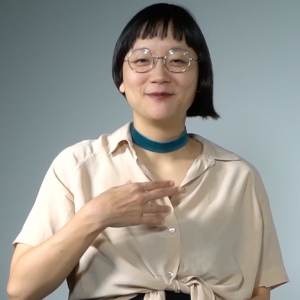
Whether you’re a novice or an expert, the Gateway to Himalayan Art audio tour explains the foundational elements that are key to understanding art from across the Himalayas. Learn about figures, materials, and concepts that enrich your enjoyment of the diverse artworks in our galleries. Unlock the symbols, meanings, and methods used to create the art on view throughout the Museum in the exhibition Gateway to Himalayan Art.
Who is Buddha Shakyamuni? Learn visual cues to help identify this important historical figure in paintings and sculptures.
Bodhisattvas and tantric deities have many visual similarities in their depiction in artworks, but they serve different roles in Buddhist practice.
Female deities serve as the focus of many practices in Buddhism, from overcoming obstacles to achieving enlightenment.
Wrathful deities and their depictions aid viewers in the release of negative emotions and afflictions.
In the Himalayas, many different religious traditions are closely related, thriving side-by-side and sharing basic visual vocabularies.
In addition to deities, Himalayan art depicts human subjects that are important to Buddhist traditions.
Clay is a common material used to create sculptures in Himalayan art. If it is so common, why do these sculptures appear so infrequently in museums?
What are the components involved in producing the beautiful and intricately detailed thangkas, or scroll paintings, found throughout the museum?
Paintings can be created through woodblock printing, a process that has been used to reproduce written texts as well as images.
The lost wax process is used to create sculptures across the world. Get a glimpse into how Nepalese artisans use this technique to produce metal sculptures.
The artworks in this exhibition are primarily used in ritual practices that are important to Himalayan religious traditions.
Rituals can focus on everyday concerns including long life, health, wealth, and the removal of obstacles and troubles. Paintings or sculptures would be commissioned as part of those rituals.
Merit is the accumulation of positive karma for our current and future lives, often achieved through ritual practices.
Mandalas hold rich symbolic meanings and are utilized by Buddhist practitioners on their path to enlightenment.
The Wheel of Life is an important teaching tool in Buddhist practice, explaining the process of life, death, and rebirth.
Narrative paintings help depict important stories associated with famous figures such as the Buddha. The vignettes surrounding this figure reveal complex insights into the life or lives of the main subject.
These life-sized photographic reproductions of the Lukhang’s murals offer the unique opportunity to see inside the renowned temple in Lhasa.
This full sized reproduction of a mural on the Lukhang’s ground floor illustrates the mythic kingdom of Shambhala and the transmission of the Kalachakra tantra.
This mural illustrates the teachings transmitted to a Great Perfection practitioner, including the practices he should perform, and the experiences he should have during them, according to the teachings of Pema Lingpa.
This mural illustrates at least six different Dzogchen treasure texts of Pema Lingpa, in which the speakers, the primordial Buddha Samantabhadra and Vajrasattva (depicted here) outline teachings.
A significant section of this mural isdevoted to the depiction of the one hundred peaceful and wrathful deities of the Tibetan book of the dead, or Bardo Thodol, as well as advanced techniques for the yoga practitioner.
These introductory murals, flanking the entrance to the temple, show local gods and spirits submitting to the spiritual authority of Padmasambhava.
This mural shows Padmasambhava and his twenty-five disciples in a succession of the eighty-four Mahasiddhas, directly relating Indian esoteric traditions to Tibetan ones.



